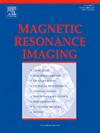子宫内膜癌MRI放射表型与临床结果之间的关联:术前风险分层的意义。
IF 2.1
4区 医学
Q2 RADIOLOGY, NUCLEAR MEDICINE & MEDICAL IMAGING
引用次数: 0
摘要
目的:本研究旨在探讨子宫内膜癌(EC)的影像学表型与临床、病理和分子特征以及无病生存(DFS)的相关性。方法:回顾性收集356例EC患者的临床、病理、分子特征及MRI放射组学特征。使用无监督机器学习将患者根据放射组学特征分为两组。比较不同影像学表型患者的特征和DFS。结果:伴有深部肌层浸润(DMI)、淋巴血管间隙浸润(LVSI)、宫颈间质浸润(CSI)、淋巴结转移、侵袭性组织学类型、术后晚期国际妇产联合会(FIGO)分期、p53过表达、雌激素受体或孕激素受体表达缺失的病变与DFS较差相关。两个集群被确定并分别定义为成像表型1和2。与表型2,表现型1表现出较高的相关性与DMI (33.7 vs 13.0 % %),LVSI (23.8 vs 9.2 % %),CSI (16.3 vs 3.8 % %),积极组织学类型(36.0 vs 17.4 % %),和先进的菲戈阶段(IB或更高,43.6 vs 22.3 % %)(p 结论:EC成像表型鉴定通过MRI radiomics特征与病理有关,分子特征,DFS,建议术前危险分层。本文章由计算机程序翻译,如有差异,请以英文原文为准。
Associations between MRI radiomic phenotypes and clinical outcomes in endometrial cancer: Implications for preoperative risk stratification
Objectives
This study aimed to investigate the correlation between imaging phenotypes of endometrial cancer (EC) and clinical, pathologic, and molecular characteristics, as well as disease-free survival (DFS).
Methods
The clinical, pathologic, and molecular characteristics, along with MRI radiomics features, of 356 patients with EC were collected retrospectively. The patients were divided into 2 groups based on radiomics features using unsupervised machine learning. The obtained characteristics and DFS of patients were compared between the various imaging phenotypes.
Results
The lesions with deep myometrial invasion (DMI), lymphovascular space invasion (LVSI), cervical stromal invasion (CSI), lymph node metastasis, aggressive histologic type, advanced postoperative International Federation of Gynecology and Obstetrics (FIGO) stage, overexpression of p53, and absent expression of estrogen receptor or progesterone receptor were associated with poor DFS. Two clusters were identified and defined as imaging phenotype 1 and 2, respectively. Compared with phenotype 2, phenotype 1 exhibited a higher correlation with DMI (33.7 % vs 13.0 %), LVSI (23.8 % vs 9.2 %), CSI (16.3 % vs 3.8 %), aggressive histologic type (36.0 % vs 17.4 %), and advanced FIGO stage (IB or higher, 43.6 % vs 22.3 %) (p < 0.001). The incidence of p53 overexpression was higher in phenotype 1 than in phenotype 2 (20.2 % vs 8.5 %, p = 0.022). Survival analysis exhibited a higher risk of poor DFS in phenotype 1 than in phenotype 2 (log-rank p = 0.002).
Conclusion
EC imaging phenotypes identified through MRI radiomics features were associated with pathologic, molecular characteristics, and DFS, suggesting potential for preoperative risk stratification.
求助全文
通过发布文献求助,成功后即可免费获取论文全文。
去求助
来源期刊

Magnetic resonance imaging
医学-核医学
CiteScore
4.70
自引率
4.00%
发文量
194
审稿时长
83 days
期刊介绍:
Magnetic Resonance Imaging (MRI) is the first international multidisciplinary journal encompassing physical, life, and clinical science investigations as they relate to the development and use of magnetic resonance imaging. MRI is dedicated to both basic research, technological innovation and applications, providing a single forum for communication among radiologists, physicists, chemists, biochemists, biologists, engineers, internists, pathologists, physiologists, computer scientists, and mathematicians.
 求助内容:
求助内容: 应助结果提醒方式:
应助结果提醒方式:


